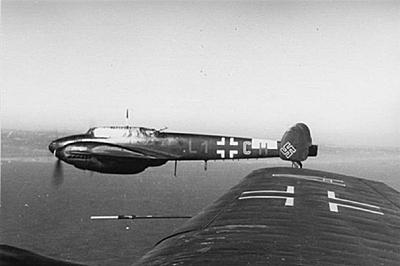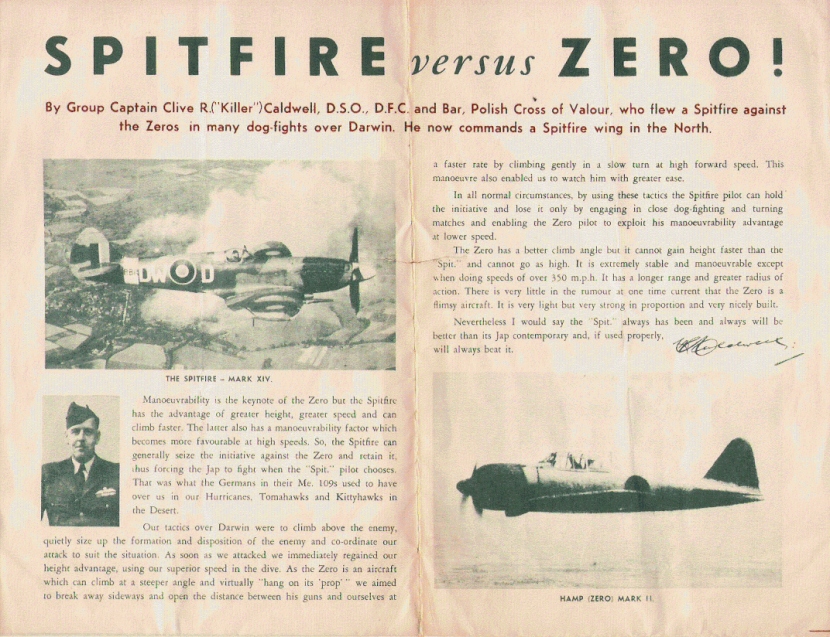In the Messerschmitt Bf 109 the Luftwaffe possessed possibly the World’s finest fighter aircraft at the beginning of the Second World War. It was superlative in all regards save one: range. Given the Luftwaffe’s primary role as a tactical force, operating in support of the Army in a Blitzkrieg attack, this was not seen as a major problem. Despite this, some consideration was given by the Reichsluftfahrtministerium (RLM) to the problem of bomber escort over longer ranges and the initial response to this requirement was Messerschmitt’s Bf 110 which seemed to offer a fine solution and was, in its way, a fine aircraft. It was, however, a large twin-engined machine and a small but vocal group of officers within the Luftwaffe remained unconvinced by its ability to combat the latest single-engined fighters that were being constructed in ever-greater numbers in France and the United Kingdom – aircraft that would however be hard pressed to deal with a machine in the class of the 109.

In early 1939 the RLM began to look around for a suitable single-engined fighter to operate in concert with the 109 over greater distances. One Italian aircraft appeared to fit the bill admirably, the Reggiane Re.2000. Unfortunately for the Germans the Reggiane fighter had already been ordered in quantity by the RAF and the Reggiane factory had no spare capacity nor were they particularly keen on the prospect of granting a production licence to a German manufacturer as Germany represented the likeliest opponent for any RAF fighter in the near future. Thus the Germans looked further afield and their attention became drawn to a small fighter newly produced by Japan and barely noticed by the International community, the Mitsubishi A6M, first flown in the Imperial Japanese year 2600 and thus known as Type 00 ‘Reisen’, the Zero.
After signing the 1936 Anti-Comintern pact, Japan was keen to foster good relations with Germany and following wildly enthusiastic reports from German test-pilots flying pre-series machines a production licence was sought and gained. Additionally a small number of Japanese-built aircraft were despatched to Germany. The first German-built aircraft was completed by Arado in record time and, amazingly, Zeros entered Luftwaffe service before they appeared in the ranks of the Imperial Japanese Navy. By the time the Zero was available in numbers the Polish and French campaigns were over and some began to regard the Japanese fighter as a needless extravagance in the light of the Luftwaffe’s dominance over any opposition so far encountered by it. The upcoming Battle of Britain would see that opinion reversed in the most dramatic fashion.

The initial forays by the Luftwaffe over Britain produced mixed-results. The airfields attacked in the early stages were within range of the 109s and bomber losses were not excessive. By contrast both the Stukas and the Bf 110s suffered appalling losses at the hands of Fighter Command’s Spitfires and Hurricanes and were quickly withdrawn from combat. Lacking the desire to commit a non-German aircraft to the fray, the Zeros were initially lightly used but with the shift of the attack towards London they would became the saviours of the German forces. The 109s could operate for barely ten minutes over London before their fuel level compelled them to return to base.

No such problem for the Zero, with triple the range (more with a drop tank), it could not only escort the bombers to and from France but could also protect the aircraft of Luftflotte 5 on their attacks from Norway. So outstanding was the Zero’s combat persistence that Spitfire pilots sent to intercept them found that they had to break off combat to refuel. This endurance would have counted for naught had it been an inferior combat aircraft but the Zero was truly exceptional. The A6M2 as committed to combat over Britain was better armed than any contemporary fighter (with the exception of the flawed Messerschmitt 110) mounting two machine guns and two 20-mm cannon. Its manoeuvrability was legendary and it could easily out turn any European monoplane fighter.
It is true that both the 109 and Spitfire were faster but the Zero could sustain a much higher angle of attack forcing an attacking fighter to break off or stall. Its only real flaw was its light construction and lack of armour but with the rifle-calibre machine guns mounted by the British fighters this was not so much of a problem as it would later prove when the Zero was required to deal with a later generation of American fighters in the Pacific. Nonetheless many Zeros were lost to damage that any British (or indeed German) fighter would have survived.
It was not invincible but, out-manoeuvred and out-gunned, the RAF fighters needed a height advantage to have a reasonable chance of success. Scrambled to intercept incoming formations with limited notice, height was an advantage the British aircraft seldom possessed. The Spitfire with its superior speed could break off combat at will but the Hurricane was slower, less manoeuvrable and less well armed than the Zero. German pilots were generally veterans of Poland and France or Spain and this experience, coupled with the dominant technical superiority of their Japanese equipment resulted in the gradual erosion of Fighter Command until an effective defence could no longer be maintained and the Heinkel 111s and Junkers 88s could bomb virtually at will and the Battle of Britain was effectively won for Germany.
Desperate measures would be needed to avoid invasion and defeat.
Captain Eric ‘Winkle’ Brown evaluated a Zero at the A&AEE and said later of the aircraft “the Zero had ruled the roost totally and was the finest fighter in the world until mid-1943”. It is a compelling irony that this invader from the land of the Rising Sun led to the twilight of the British Empire.
The illustration depicts the Mitsubishi A6M Model 22 ‘White 13’ of Feldwebel Heinz Bar 1./JG 51, September 1940. By this time Bar had scored 12 victories. His final total was 220 confirmed kills in over 1000 combat sorties.
Follow my vapour trail on Twitter: @Hush_kit
Do you have an idea for a Hush-Kit article you would like to write? Are you an editor with pages to fill? Contact: hushkiteditorial@gmail.com
Do you have an idea for a Hush-Kit article you would like to write? Are you an editor with pages to fill? Contact: hushkiteditorial@gmail.com
By Ed Ward, from an original idea by Joe Coles
Ed Ward is an illustrator, writer, historian and regular Hush-Kit contributor
See his fantastic artwork here: http://tedwarddraws.wordpress.com/




Δεν υπάρχουν σχόλια:
Δημοσίευση σχολίου